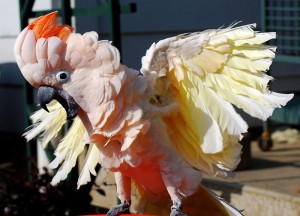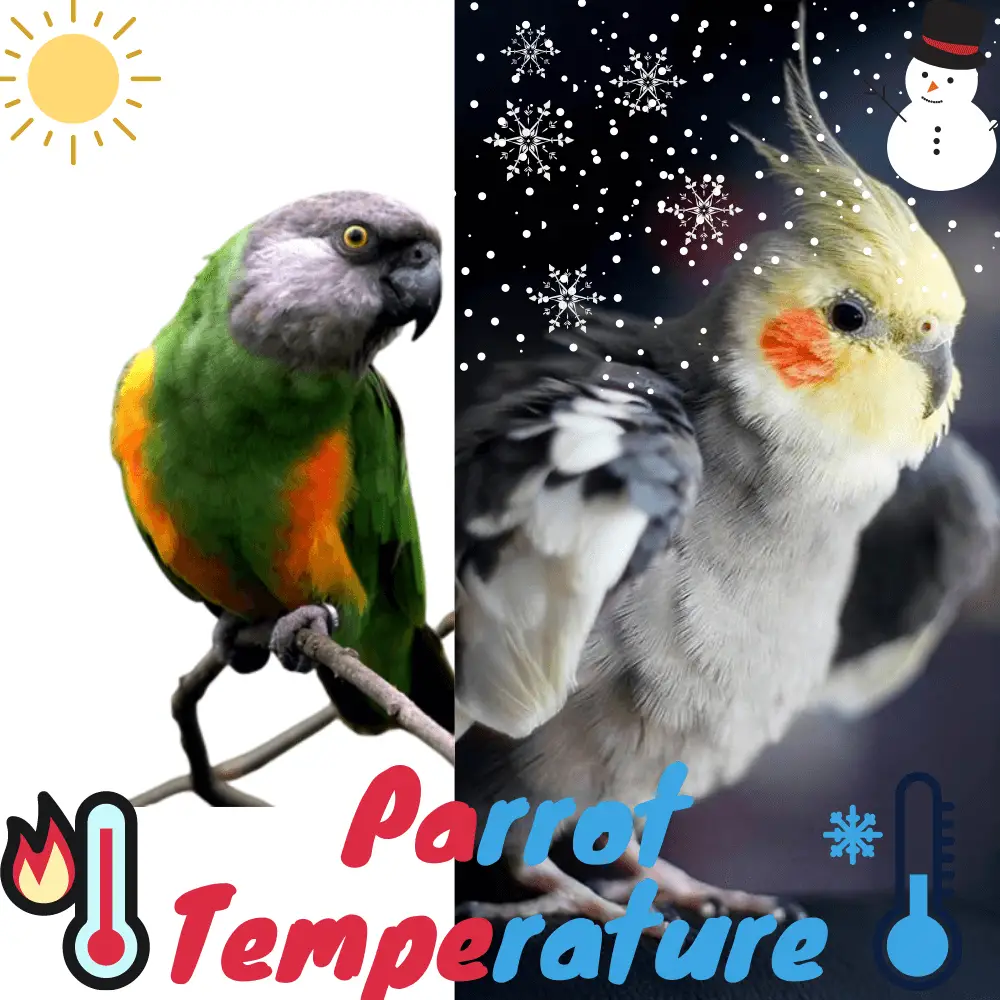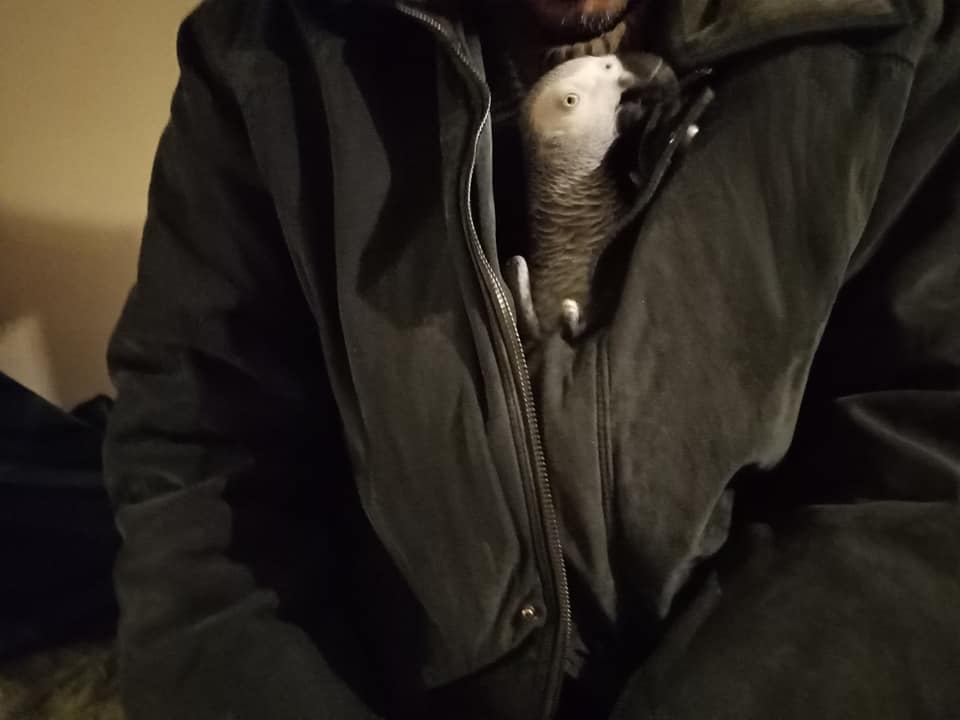Parrot Temperature Regulation: Each Parrot or parakeet must have a certain consistency in its body temperature and some have developed very specific means to achieve this. Many animals like reptiles are ectothermic, that is, they need an external heat input ( heating device ) to maintain their temperature because they are incapable of thermoregulation. Others are endothermic, meaning that they have certain mechanisms that allow them to regulate their body temperature themselves.
Parrot Thermoregulation
Have I ever mentioned to you how birds are utterly charming, intelligent, and of course exceptional animals? Well, they will prove it once again in the course of this text. Parrots have their own unique way of controlling their temperature. Unlike mammals, they do not have brown fat, but through a variety of behaviors and physiological mechanisms, they thermoregulate themselves. Your parrot’s normal body temperature is much higher than in mammals.
It is between 39 ° and 42 ° C, with small birds having a higher body temperature than large ones. An important point to remember is that parrots do not tolerate high temperatures very well and that when the mercury reaches 46 ° C; this is fatal to them. It is especially important to know the temperature differences in which to keep a parrot (ideally 23 to 25 ° C ) and all the more so in cases where the bird in question is hospitalized and kept in an incubator.
It is thus much easier to set the appropriate temperature at which it will be comfortable. Indeed, when a parrot is sick, it is necessary to warm its environment slightly, because its physiological mechanisms are disturbed and out of order by its health problem. So he will have difficulty thermoregulating himself.
Temperature for cockatiels
SOURCE:BirdNerdSophie
So what are these wonderful abilities that parrots have to successfully regulate their body temperature? Let us first look at the plumage. In addition to being both shimmering and soft, the bird’s plumage serves both to evacuate and conserve heat. The so-called “outline” feathers (the ones you see when you look at the bird ) provide some insulation, but the down ( the tiny, soft white feathers camouflaged under the blanket feathers)) is the one who does most of the work. When they are cold, the birds will “puff up” their down to trap the air between their feathers, then they will start to tremble to produce heat.
Another nifty aspect of our feathered buddy: he will manage to reduce heat loss by 12% by hiding his head in his feathers and by 40-50% by “sitting down” ( that is, by hiding his head in his feathers). pressing its abdomen and cloaca against the surface it is on ).

I would like to bring here an additional detail that I find very important: you have no doubt noticed that the swelling of the feathers and the camouflage of the head in them as well as the trembling can also be the first clues that a bird is not in its “bucket”. Along with certain other clinical signs (eg anorexia, half-closed eyes, lethargy, ataxia, and others), they may be indicators of health problems in your bird. It is always the responsibility of acting very quickly with a parrot showing such signs.
When it is at this point, it is because your boyfriend is no longer able to hide from you that he is not well (I am referring you here to the book The behavioral tripolarity of the parrot.: the instinct of prey). A visit to the veterinarian is essential! If I could give you just one piece of advice, I would say: When the parrot looks bad, it’s always an emergency.
Due to its small size, it is an animal that will see its general condition deteriorate at a lightning speed ( weight loss, dehydration ) when it is affected by a disease or when it suffers from a hemorrhage that is not taken care of. and processed.
I would like to introduce here the notion of a “state of shock”. Shock is defined as deficient tissue perfusion ( perfusion is the transport of fluids and oxygen through blood vessels to the blood capillaries while hydration is the presence of fluids in the interstitial space which is the space between cells) due to too slow blood flow or uneven distribution of blood flow. This leads to poor oxygenation of the tissues.
There are several types of shock, but one that is often encountered is hypovolemic shock. The most common cause of hypovolemic shock is bleeding. Hypovolemic shock is divided into three phases. Here again, the parrot stands out from small mammals, because it will enter the third and final phase of the shock ( the most serious obviously) when it has lost 60% of its intravascular blood volume compared to mammals which will enter this phase as soon as 40% of their intravascular volume is lost. Birds, therefore, tolerate blood loss much better than mammals. Exceptional did I say?
We have seen the mechanisms allowing the bird to retain its heat; let us now see those which allow its evacuation. Parrots do not have sweat glands and they must evacuate heat through their skin or through shunts ( abnormal communication between two parts of the cardiovascular system where different pressures prevail.) in their blood system. Let me explain: during times of stress, a large proportion of the blood from the left ventricle will be sent directly to the legs to increase heat loss.
In some species with very long legs, the latter can receive up to three times as much blood as the pectoral muscles and twice as much as the brain, in a single heartbeat. In some aquatic birds and in wading birds, the popliteal artery forms a network of arteriovenous vessels at the level of the tibiotarsal which warms the cold blood returning from the extremities. How? ‘Or’ What? These small blood networks transfer heat from the warmer arteries to the veins which bring blood back from the extremities and which are cooler.
This allows blood to flow through the paws without significant heat loss. This network is called the “admirable network”. Then, when they need to release heat, the birds will raise their wings to expose the wingless (featherless) areas below them.
They can also pant ( birds will raise their wings to expose the wingless (non-feathered) areas below them. They can also pant ( birds will raise their wings to expose the wingless (non-feathered) areas below them. They can also pant (yes, like dogs! ). These two mechanisms allow heat removal by evaporation. Finally, when the bird is flying or running, there is some evaporation which will be done by the air sacs to allow more heat to dissipate.
When it comes to behavioral tricks birds adopt to conserve heat or dissipate it, we think more of wild birds. Some species will use small shelters, such as crevices in trees.
You will also be able to observe in the small species, a band of merry fellows all “stuck” on each other. When it comes to cooling off, birds will bathe on hot days and seek out shady spots. These two aspects are also very important for keeping your parrot in captivity. A bird should never be placed in direct sunlight.
There should always be a corner of shade in the cage so that he can take refuge there as he pleases when he has had enough of his sunbathing. In addition, a parrot should ideally “wash” every day. This is essential for maintaining beautiful, healthy plumage.
Now you will most certainly be able to recognize when your parrot is hot or cold. Thus, you will be ready to react to adapt to the situation, and the temperature will be an environmental condition of your bird’s life that will no longer make him… neither hot nor cold!
Blood parrot temperature
Parrots and the summer heat The beautiful days are fast approaching, summer is setting in, the sun is shining, the temperatures are rising… The days are getting hotter and even the night temperatures are struggling to drop… and this can last several days or more. , we then enter a heatwave period. A harsh time for all living beings.
Parrots are birds native (mostly) to the tropics where temperatures and humidity levels are often high. So why would the summer heat and the heatwave be difficult for a parrot to bear? This is a question that many Parrot owners ask themselves.
Our birds have acclimatized to our regions and therefore react strongly to extreme temperatures. What most people don’t realize is that the heat of summer is much more of a problem for our parrots in captivity than the cold temperature of winter.
The Parrot body reacts very differently between extreme temperatures of cold and hot. In very cold weather, when the temperatures are negative, the body activates the “priority organs” option and directs the main blood flow to the vital organs (sometimes to the detriment of the extremities). Our only concern is to keep our birds warm. And we have the solutions for that: bring them home, provide a source of heat, give a richer diet….
However, in extreme heat conditions, birds are at a disadvantage for two reasons. First, they do not have a perspiration system (sweat glands) like mammals that allows the skin to cool when moisture is evaporated by these famous sweat glands.
Second, mammals with few sweat glands compensate by dissipating heat (by evaporating exactly) through the mouth in order to regulate their temperature. But the birds have dry beaks and therefore cannot benefit from this solution. If we see them panting when they’re hot, it’s more of a reaction to heat stress than a way to cool off. In hot weather, you need to be especially mindful of your older, overweight birds.
They are even more sensitive. Recognizing an “overheated” bird You can easily spot a hyperthermic bird: – It breathes heavily, its beak wide open – It holds its wings away from its body – It may be on the ground – It keeps its plumage flat – It sits behaves in an anxious or stressed way – … If your bird is really unwell and you have to take its temperature, remember birds naturally have a body temperature much higher than ours is around 39.5°C – 40 °C with variations depending on the species.
(See article 10 signs to recognize a sick parrot) Gestures to banish Here is a list of things not to do: – Leave your bird in front of the window (the sun is turning don’t forget, a window in the shade in the morning may be in direct sunlight in the afternoon), at the risk of finding it dead on returning in the evening – Forcing your parrot to shower, cold water on the warm body can cause death by hydrocution
Forcing your bird to drink, the risk of going the wrong way (not to mention trauma and loss of confidence…) – Put a fan in front of the cage, increased the risk of sinusitis – … It is important to try to cool the bird or its environment as well as possible. Here are five solutions to help your parrot in times of high heat.
Parrot temperature
- Keep your bird in the shade it’s a good idea to let your bird get the fresh air outside and enjoy the sun, but like us, too much direct sunlight can quickly cause overheating or sunstroke. To avoid this, ALWAYS make sure your bird has access to a large enough shaded area to escape the sun at all times. Modify your installation if necessary by covering the roof or a very sunny side with a canisse view breeze, for example. You can easily remove it to let the birds benefit from the freshness of the night. Prefer natural materials (canisse, bamboo, etc.) rather than sheet metal or plastic, which increase the heat tenfold.
- Bring fresh water Access to water is essential in case of high temperatures. Be sure to bring fresh water several times a day. Water allows your parrot to rehydrate and refresh. Place your water bowl in the shade, bacteria will develop less quickly. Be generous with water bowls! Bring some high up, on the ground, etc… Especially if your aviary houses several individuals. I already talked about it
- Fresh fruits and vegetables Your parrot has a balanced diet, its bowl, therefore, includes fresh fruits and vegetables every day (divided into several meals). No matter the weather, it is important not to leave these foods at room temperature for too long so as not to let bacteria, flies, and other insects soil Coco’s food! In hot weather, it is even more important to be attentive to the freshness of the food and to pick up the bowls within a few hours.When it is hot, parrots appreciate fresh vegetables and fruits, even more, they refresh them, hydrate them, etc. Be inventive in your presentation: on a skewer, in enrichment, in aquatic enrichment, iced, in fruit juice (read my article “Fruit juice & Parrots”)…
- A parrot in the mist Refreshing the environment is important in case of a heat wave, ideal before or after the hottest hours. Several solutions are available to you: – Refresh the aviary with a small jet of water on the walls, the roof, and the ground (never on the birds) – Spray the aviary or the birds. Misting means spraying fine droplets, your parrot should not come out soaked! It is then necessary to spray near or next to your bird, leaving him the choice to enter or leave the mist at will. Never force your bird at the risk of losing its confidence in you. Remember that trust is lost very quickly and takes a long time to recover.
- Water fun A hot day is also an opportunity for your parrot to play with water! So bring him “aqua fun” activities! – Bring moistened plants (leafy branches, salad, grass tray…) – Ice cubes will amuse your parrot – Put toys in a bowl of shallow water – … I strongly recommend that you keep your bird calm during strong heat (no free flight, no training, no abseiling, etc.), in short, no physical exertion that would cause the machine to overheat unnecessarily. Here’s what to spend a serene summer! Enjoy the summer and happy holidays!
What is the best temperature for a bird?
SOURCE:Howcast
Related Postes:






















